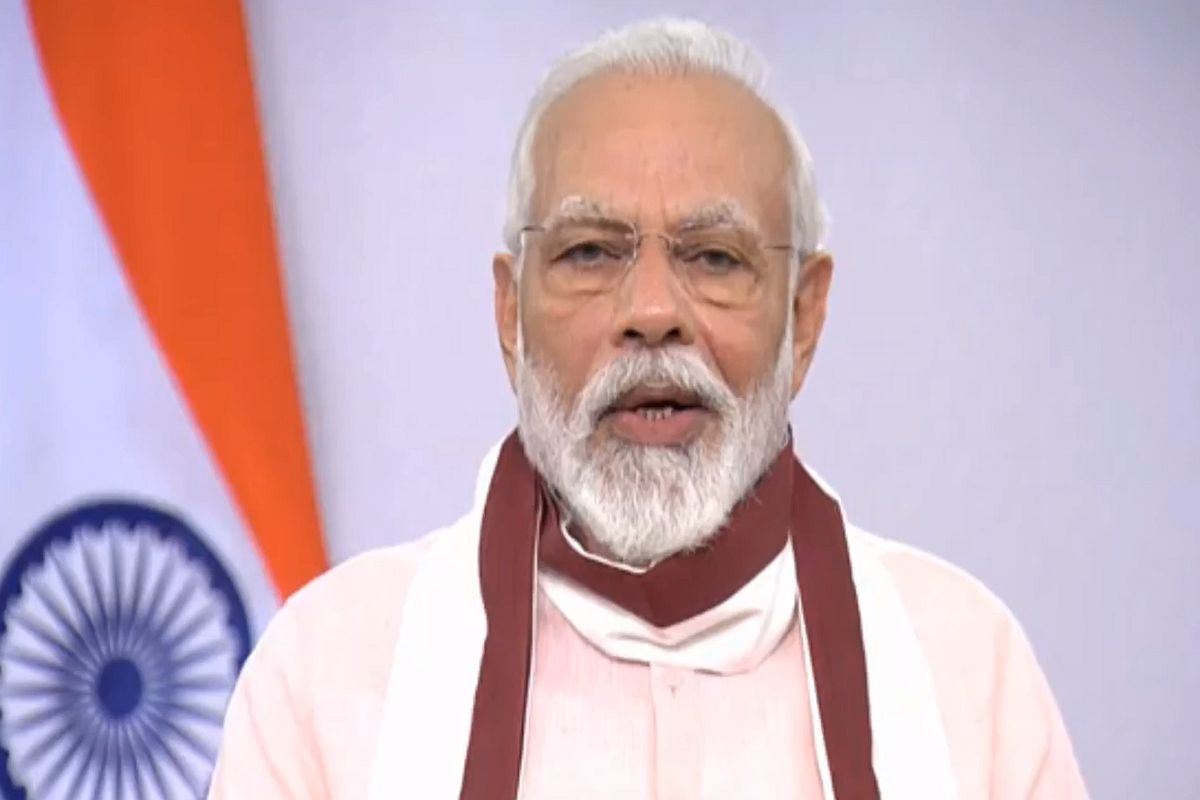Torrential rains lash multiple cities in China
Torrential rains have lashed multiple cities in south China's Guangdong Province including Zhongshan and Zhuhai, with 58 rainstorm alerts in effect across the province.
’17 Indian troops who were critically injured in the line of duty at the standoff location and exposed to sub-zero temperatures in the high altitude terrain have succumbed to their injuries, taking the total that were killed in action to 20,’ said the army in a statement yesterday.

PM Narendra Modi (File Screengrab: Twittter/@PMOIndiaa)
Prime Minister Narendra Modi held a meeting late night on Tuesday with the top brass of Centre, which was attended by the military heads, soon after the army confirmed that 20 Indian soldiers were killed in a “violent face-off” with Chinese troops at Galwan Valley in Ladakh.
Home Minister Amit Shah, Defence Minister Rajnath Singh, Foreign Minister S Jaishankar, Finance Minister Nirmala Sitharaman were also present at the the meeting which took place at around 10 pm yesterday, reported NDTV.
News Agency IANS quoted sources as saying that the death toll is likely to go up as many soldiers have been brutally injured.
Advertisement
Indian Army issued a statement on Tuesday night wherein it said, “17 Indian troops who were critically injured in the line of duty at the standoff location and exposed to sub-zero temperatures in the high altitude terrain have succumbed to their injuries, taking the total that were killed in action to 20.”
The statement further stated that Indian and Chinese troops have disengaged in the Galwan area where they had earlier “clashed on the night of June 15 and June 16, 2020.”
43 Chinese soldiers were killed or seriously injured according to news agency ANI sources, although the army’s statement did not mention about this.
China’s defence ministry confirmed the incident had resulted in casualties but did not give the nationality of the victims or any other details, according to news agency AFP.
It is yet to be officially confirmed by both the sides as to how many Chinese soldiers were killed in the clash, but the MEA spokesperson has stated that “both sides suffered casualties”.
While the army earlier on Tuesday said that an officer( Colonel) and two soldiers were killed in a violent face-off on Monday night during de-escalation process in Galwan Valley. It later on added that 17 more critically injured were “exposed to sub-zero temperatures… (and)succumbed to their injuries”.
India blamed the clashes on “an attempt by the Chinese side to unilaterally change the status quo there”, rebutting China’s claims that Indian soldiers crossed the border.
Meanwhile, Beijing has accused Indian soldiers of “crossing the border and attacking Chinese personnel”, according to an AFP report.
China’s Foreign Ministry had said it called on India to not take unilateral actions or stir up trouble.
Army chief General Manoj Mukund Naravane had on Saturday assured that the entire situation along India’s borders with China is “under control”.
General Naravane said both the sides are having a series of talks which started with Corps Commander-level talks and is being followed up with meetings at the local level between commanders of equivalent ranks.
Earlier on Friday, Defence Minister Rajnath Singh reportedly held a review meeting with Chief of Defence Staff General Bipin Rawat and the three Service Chiefs to understand the ground situation. It was the second review meeting of the Defence Minister within a week. The first was on June 8, two days after the Lieutenant General-level meeting between the two countries.
Several areas along the LAC in Ladakh and North Sikkim have witnessed major military build-up by both the Indian and Chinese armies recently, in a clear signal of escalating tension and hardening of respective positions by the two sides even two weeks after they were engaged in two separate face-offs.
The nearly 3,500-km-long LAC is the de-facto border between the two countries.
Indian and Chinese troops have remained engaged in an eyeball-to-eyeball situation in several areas along the LAC in eastern Ladakh, signalling that the standoff could become the biggest military face-off after the Doklam crisis in 2017.
Advertisement